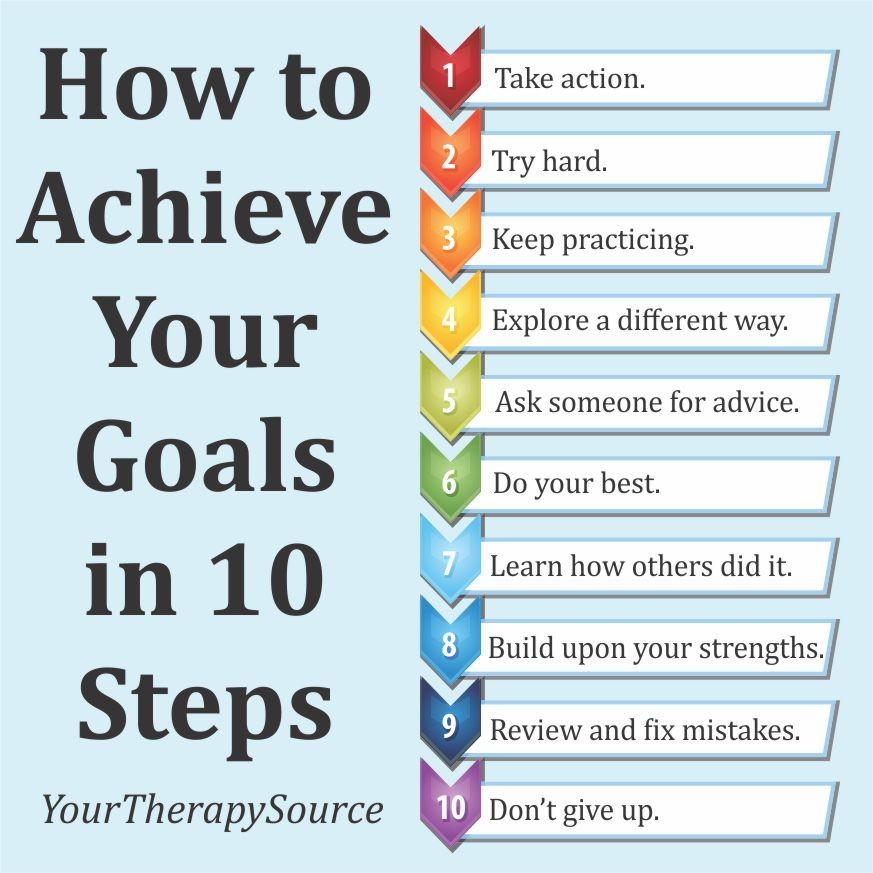Y10 GCSE Target Setting
A guide for parents
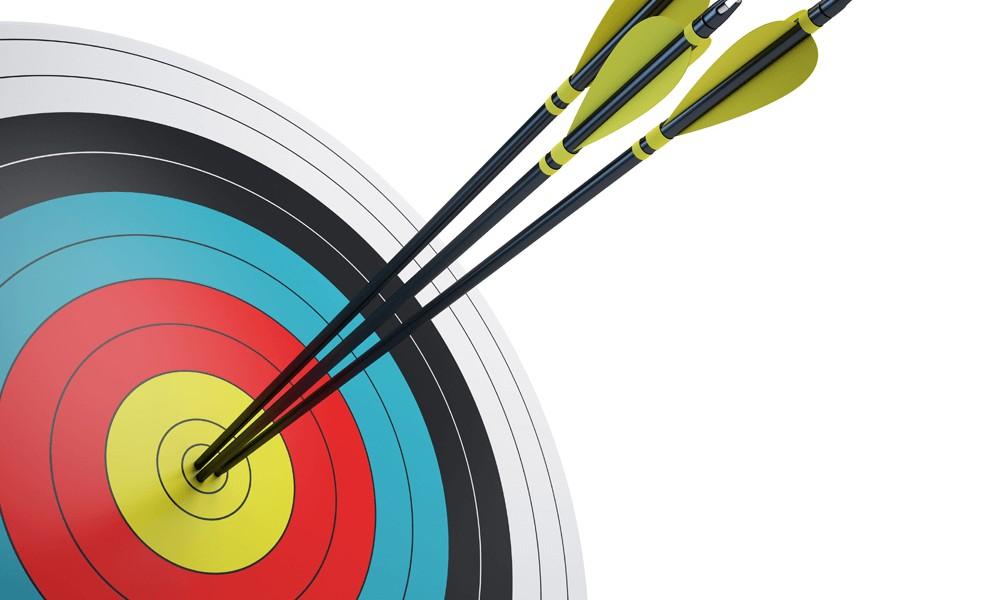

A guide for parents

Setting goals helps trigger new behaviours, helps guide your focus and helps you sustain momentum.
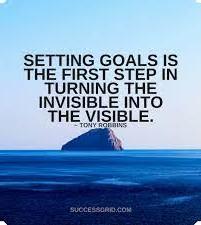
Why is it important?
Setting the right goals can lead to:
• A better chance of success.
• Increases motivation and performance.
• Build resilience.
• Promotes growth and development.
Your child is going to select their own GCSE target.
Before they do, they will watch an assembly explaining the process. Most of the information from that assembly is on the following slides.
Rationale for students selecting their own targets:
A GCSE target is something to aim for, a goal to strive towards. We believe that by providing accurate information about what is possible and encouraging ambition, students can take ownership and responsibility for choosing an appropriate target. In doing so, we believe students will be more motivated to try their best to achieve these targets rather than ones that are imposed on them by teachers.
Of course, we will guide students and check them before they are confirmed, and we ask you to do the same. Students will bring home their targets and will be asked to sit down and discuss them with you. Once this discussion has taken place, we ask you to sign the form and for your child to return it to their Tutor.

A numbered GCSE target
Measured using the GCSE scale from 9-1
May 2025. This isn't going to change
So what can you control?
• Achievable
• Realistic

ACHIEVABLE – ALMOST ANYTHING!
REALISTIC – IT DEPENDS ON EFFORT!

You have been provided with what are called TRANSITION MATRICES for each of your subjects. They look like this:
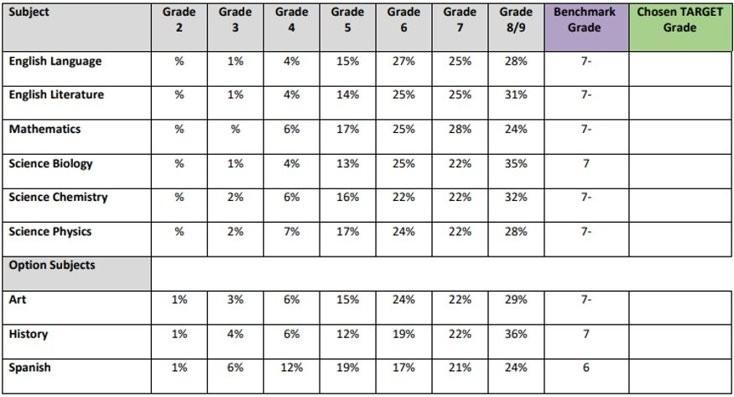
There is a non-profit organisation called the Fischer Family Trust.
They have been collecting data about school children for years.
They have used this data to plot the likelihood of a student achieving each GCSE grade for each subject based on their CAT4 scores from Y7.

However, it is not an exact science, as everyone is different, and it depends on a lot of different little factors.
What it is, is a calculation of likelihood.
• Your child has been provided with their own personal transition matrices based on their CAT4 scores.
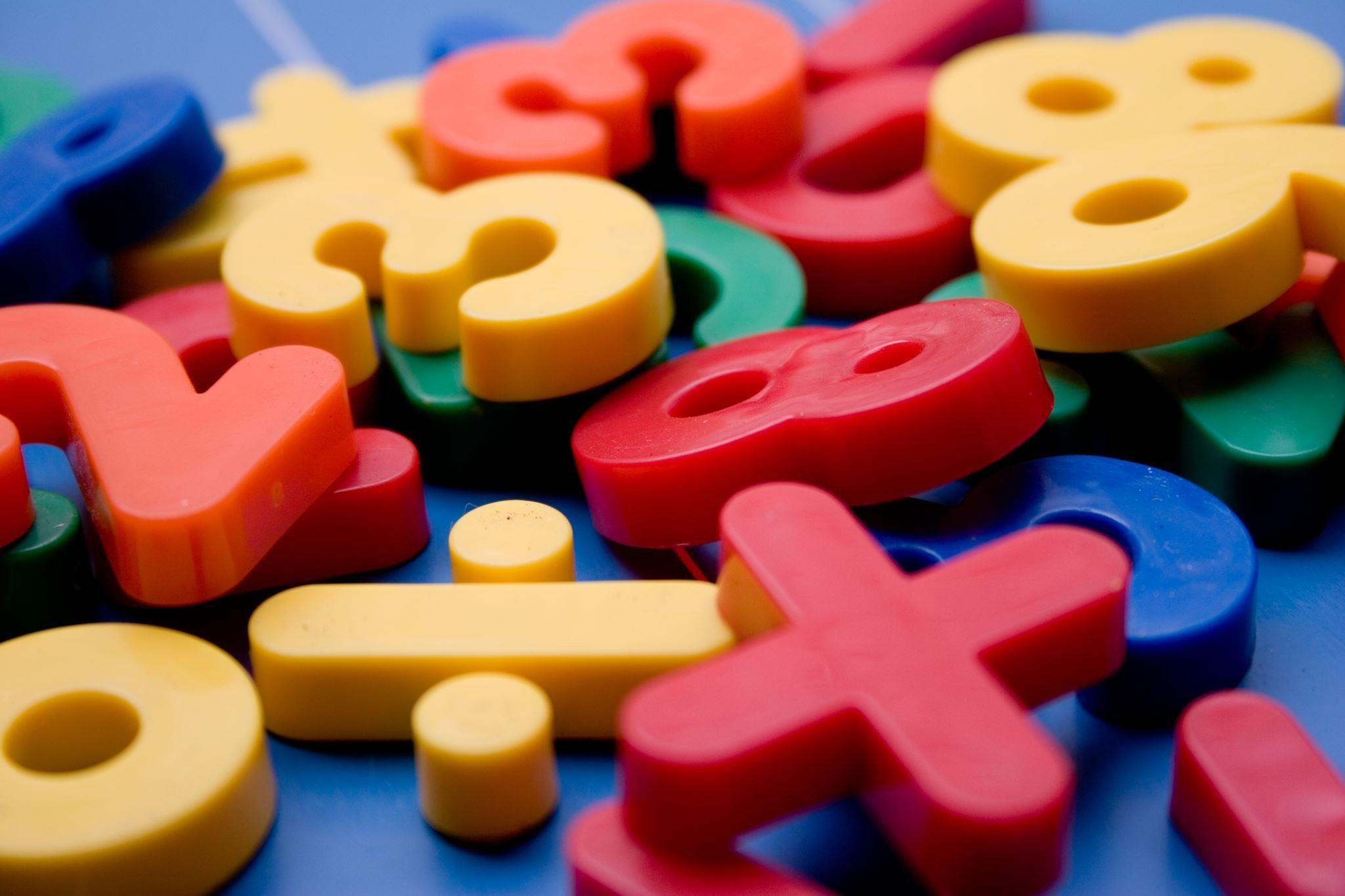
• Every child's is different and unique to them.
• They will use these to set their targets for the next 18 months and will do this in school.
• They will then bring it home to you before submitting back to their Tutor.
They need to consider what GCSE grade is AMBITIOUS, ACHIEVEABLE and REALISTIC in each of the subjects they have chosen?

They CANNOT choose a target that puts them in the bottom 50%!
Bottom 50% is below average, THAT IS NOT A TARGET!
The Benchmark grade shows them where 50% lies. Their target MUST be higher than this!
Some of their Benchmark grades might have a + or a – symbol next to them. That tells them whether 50% lies towards the top or bottom of this grade
• You are going to choose your own GCSE targets based on what you have seen and heard today and what your ambitions are for the future.
• Remember, be AMBITIOUS but make sure it is ACHIEVABLE AND REALISTIC.
• Take your form home to your parents. Discuss it with them and review your targets. IT IS OK TO CHANGE THEM AT THIS POINT!
• Submit them to school.
• Your teachers will review your targets to make sure they are AMBITIOUS, ACHIEVABLE and REALISTIC.
• These targets will then be used by you and your teachers to report your progress.
A pretty straightforward case.
This student has Benchmark grades of 7, with one 6 in Spanish.
However, in all subjects, 24%-36% of students of similar ability go on to get a grade 8 or 9. A grade 8 target in most subjects is therefore AMBITIOUS and REALISITC.
Spanish is the only exception, less than 50% of students of similar ability get Grade 7, 8 or 9. here the student may wish to consider a target of a 7 (still above 50%) or be particularly ambitious and aim for an 8.
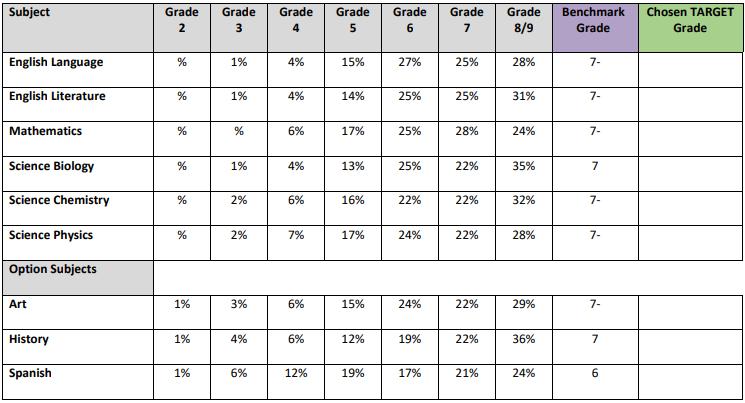
This student has Benchmark grades of 5 or 6.
In all subjects, less than 18% of students of similar ability go on to get a grade 8 or 9. This doesn't rule these grades out, but it is less REALISTIC.
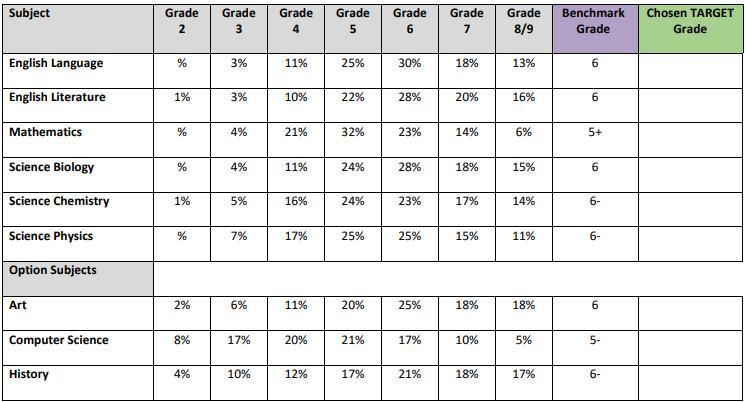
However, in most subjects, over 30% of students of similar ability go on to get grade 7 or above. This is the REALISTIC and AMBITIOUS target.
This is not the case in Maths where the benchmark is 5+. In this case the student may have been working really hard in Maths as they know they need a grade 7 for their future course and decide to be more AMBITIOUS and select a grade 7 target. 20% of students of a similar ability do achieve this.
In contrast, in Computer Science, their Benchmark target is 5-, they may struggle in this subject and as the 50% benchmark is already at the lower end of 5, as indicated by the -, they may decide that a grade 6 target is a REALISTIC and AMBITIOUS goal. After all, 32% of students of similar ability do achieve this.
It is mainly down to you!
That doesn't mean there aren't people out there who can't help.
• Family
• Teachers
• Friends
• Trusted adults
• Careers advisers
All these people and more can help you on your path to achieving your goals. In fact, they all actively want to help you!
